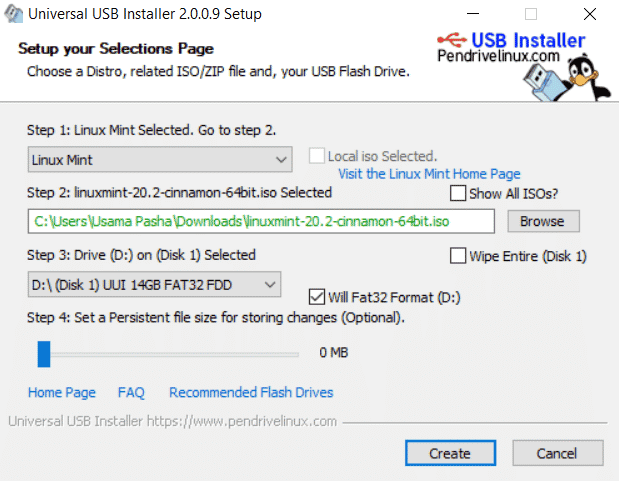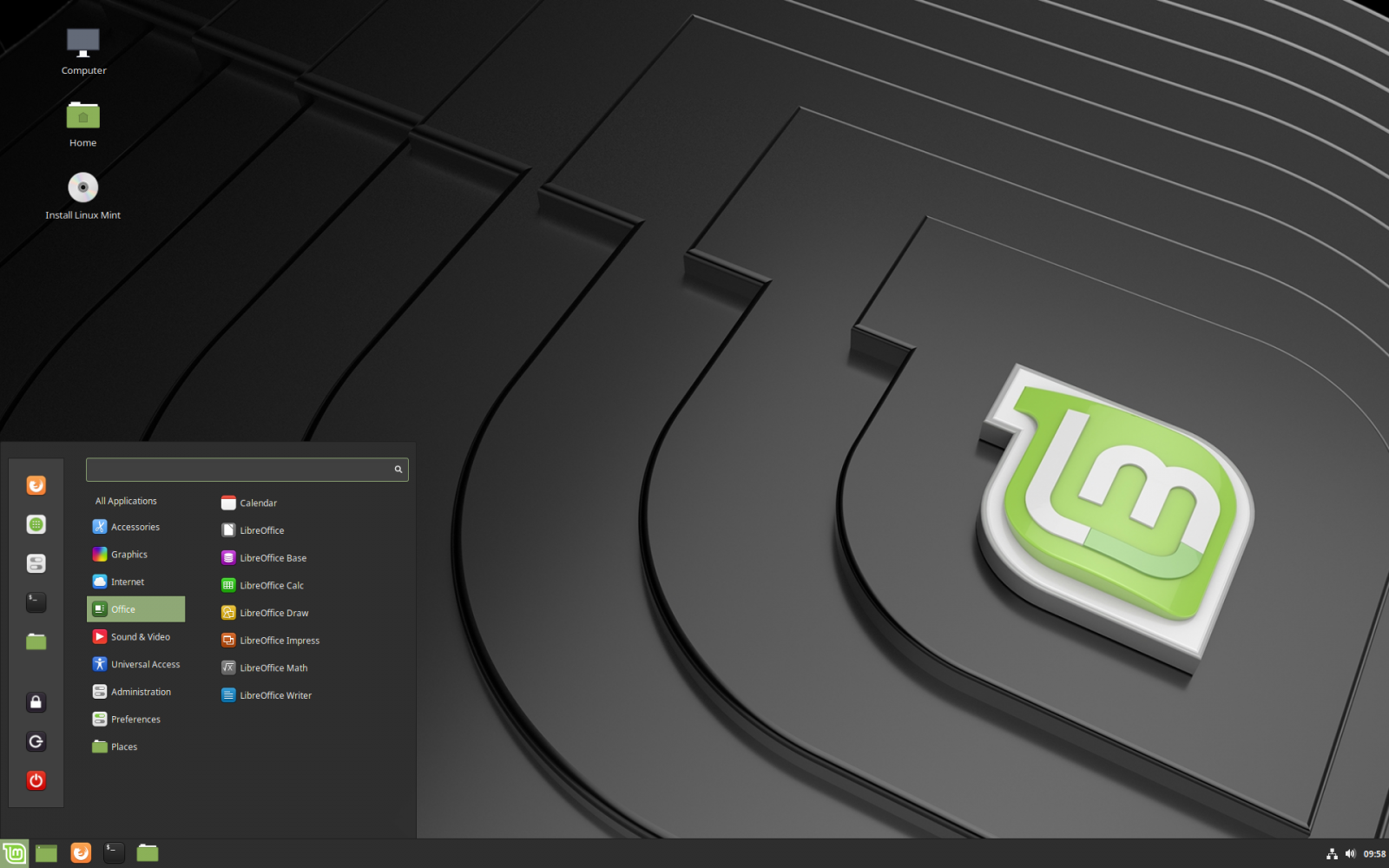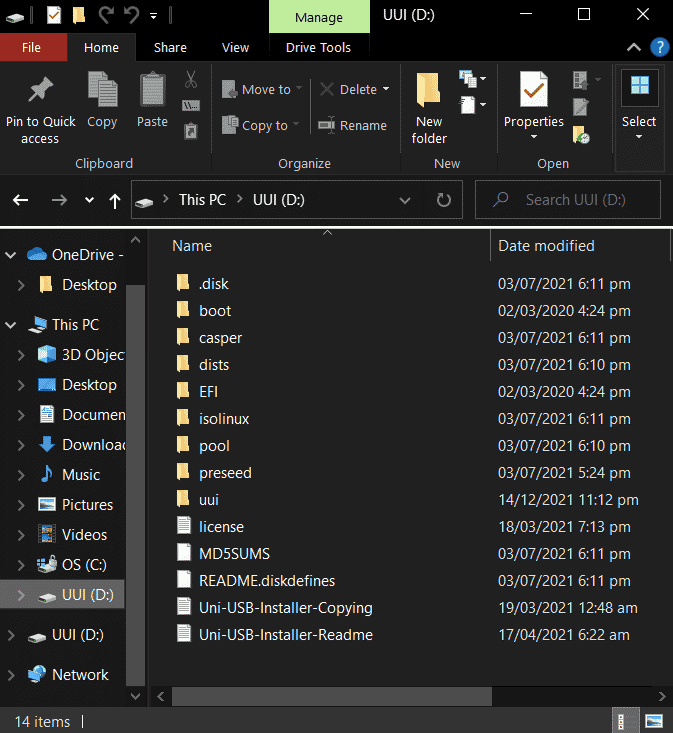

- Linux mint iso to usb windows 10 how to#
- Linux mint iso to usb windows 10 install#
- Linux mint iso to usb windows 10 full#
- Linux mint iso to usb windows 10 portable#
- Linux mint iso to usb windows 10 software#
After that just click the Continue button. Here we are selecting the English, you can select accordingly.
Linux mint iso to usb windows 10 install#
The first screen of the installation wizard will ask you to select the language in which you want to install the Linux Mint. Step 5: Select system installation Language

Just double click on that to start the installation process. Where you will see a DISC on the screen saying “ Install Linux Mint“.

Once you boot the USB drive, the Live Linux Mint will run. Step 4: Select the Linux Mint installation option When it appears, select the connected USB drive to boot the system. Start the PC and press, F12 or Esc depending on your system, however, the F12 is a common one to get the boot menu. Insert the same USB to the PC or laptop where you want to install the Linux Mint. Step 3: Insert the bootable USB to computerĪfter flashing the USB with Linux Mint ISO file. Finally, click on the START to burn ISO on USB. Windows explorer will open choose the download ISO file. Click on Device select the connected USB drive and from Bootable selection click on the SELECT button.
Linux mint iso to usb windows 10 portable#
After that run this portable Linux bootable USB maker. It is available for Windows 10/8/7, so no problem at all.
Linux mint iso to usb windows 10 software#
For that, we use a software called Rufus. Next, step is to create a bootable USB drive of Linux Mint using its downloaded ISO file. Go there and get the latest version of Linux Mint. In case, not, here is the official website link. If you already have the bootable ISO file of this Distro then simply move to the next step. The steps given in this tutorial will be the same for older Linux Mint versions such as Linux Mint 18, 17, 16 and so on. Here we are installing the latest Linux Mint 19.2 Cinnamon 64-bit on an empty hard disk.
Linux mint iso to usb windows 10 how to#
Step 12: Login to Linux How to install Linux Mint via USB- Step by Step

Note: All content on your hard disk will be deleted completely! Mark ” Erase Disk and Install Linux Mint ” and click ” Install Now “.Check the option “ Install third-party software for graphics and WLAN devices, Flash, MP3 and other media ” and click ” Next “.Select a language on the left side and click ” Install Linux Mint “.Double click on ” Install Linux Mint ” CD.Power up your PC and select the USB stick as the boot drive.Quick Start Guide Linux Mint Installation If you have the latest PC or laptop then simply go for Cinnamon and KDE. If you have some old computer PC or laptop then use Xfce and MATE desktop environments because they consume less RAM and computing power since they are not graphically heavy. The base of the all will be the same but the hardware requirements will be different. The latest version of Linux Mint is available in four Linux Desktop environments: Cinnamon, Xfce, KDE, and MATE. If you are new to Linux then it is one of the best Linux distros to start with because of its Windows 7 or Windows XP like interface, therefore well suited for beginners.Īs Linux Mint is available in multiple flavours, thus which one should you install? The latest version of the Linux Mint is the 19.2 “Tara” which is available in multiple Desktop environments like previous versions. Random 4 KiB (Q= 1, T= 1): 0.011 MB/s ĭate: 08:14:18 OS: linuxmint 19.Do you want to install Linux Mint on your PC? In this tutorial, we will explain step by step how to do it for PC or Laptop or Virtual Machine. Except the system freezes from time to time. Once they are open everything runs quickly. Once the system boots programs are slow to open. I am looking for help understand where the bottlenecks are.
Linux mint iso to usb windows 10 full#
I have seen several post from people saying that running a full install of linux on a usb is slower than an SSD but nowhere near this slow. It is also more than 10 slower than booting up an ISO image copied to a different thumb drive. This is more than 20 times slower than booting from an SSD. Another 5 or so to get to the desktop after logging in. It is surprising that it takes so very long to boot to the login prompt.It takes ten minutes to get the login prompt. I understand that the drives have a limited life made shorter by the high number of writes caused by running off of thumb drive. I have seen post where people have made full Linux installations to a USB thumb drive. I could really use some help troubleshooting a problem I am having with my Linux Mint 19 installation.


 0 kommentar(er)
0 kommentar(er)
